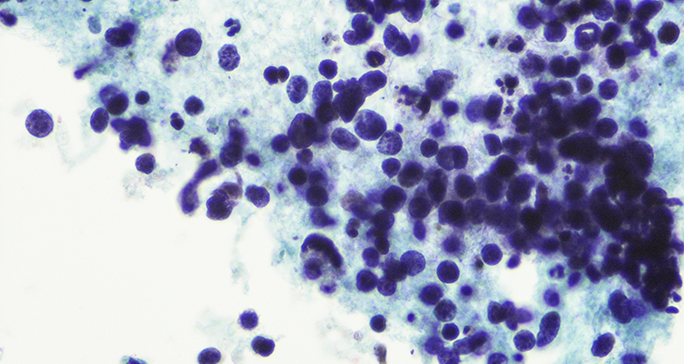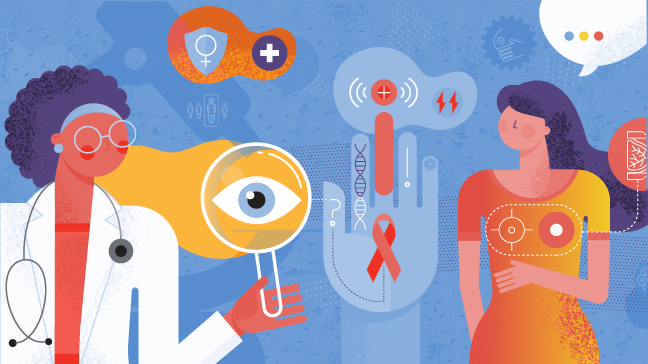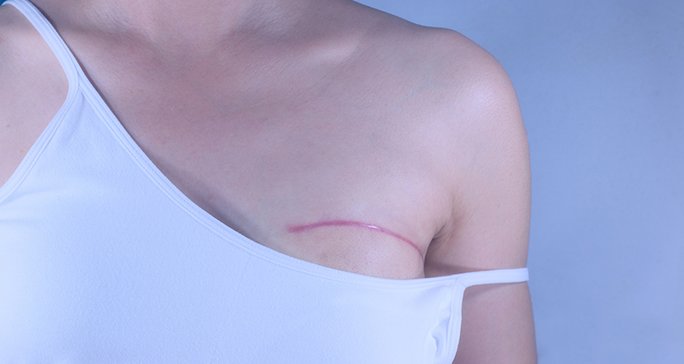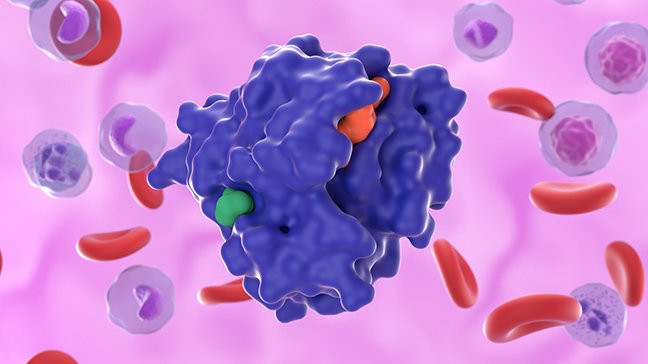- Diseases
- Acoustic Neuroma (14)
- Adrenal Gland Tumor (24)
- Anal Cancer (68)
- Anemia (2)
- Appendix Cancer (16)
- Bile Duct Cancer (26)
- Bladder Cancer (72)
- Brain Metastases (28)
- Brain Tumor (232)
- Breast Cancer (714)
- Breast Implant-Associated Anaplastic Large Cell Lymphoma (2)
- Cancer of Unknown Primary (4)
- Carcinoid Tumor (8)
- Cervical Cancer (158)
- Colon Cancer (166)
- Colorectal Cancer (116)
- Endocrine Tumor (4)
- Esophageal Cancer (44)
- Eye Cancer (36)
- Fallopian Tube Cancer (8)
- Germ Cell Tumor (4)
- Gestational Trophoblastic Disease (2)
- Head and Neck Cancer (12)
- Kidney Cancer (128)
- Leukemia (342)
- Liver Cancer (50)
- Lung Cancer (286)
- Lymphoma (278)
- Mesothelioma (14)
- Metastasis (30)
- Multiple Myeloma (100)
- Myelodysplastic Syndrome (60)
- Myeloproliferative Neoplasm (4)
- Neuroendocrine Tumors (16)
- Oral Cancer (100)
- Ovarian Cancer (172)
- Pancreatic Cancer (160)
- Parathyroid Disease (2)
- Penile Cancer (14)
- Pituitary Tumor (6)
- Prostate Cancer (146)
- Rectal Cancer (58)
- Renal Medullary Carcinoma (6)
- Salivary Gland Cancer (14)
- Sarcoma (238)
- Skin Cancer (294)
- Skull Base Tumors (56)
- Spinal Tumor (12)
- Stomach Cancer (64)
- Testicular Cancer (28)
- Throat Cancer (92)
- Thymoma (6)
- Thyroid Cancer (96)
- Tonsil Cancer (30)
- Uterine Cancer (80)
- Vaginal Cancer (16)
- Vulvar Cancer (20)
- Cancer Topic
- Adolescent and Young Adult Cancer Issues (20)
- Advance Care Planning (10)
- Biostatistics (2)
- Blood Donation (18)
- Bone Health (8)
- COVID-19 (362)
- Cancer Recurrence (120)
- Childhood Cancer Issues (120)
- Clinical Trials (630)
- Complementary Integrative Medicine (22)
- Cytogenetics (2)
- DNA Methylation (4)
- Diagnosis (232)
- Epigenetics (6)
- Fertility (62)
- Follow-up Guidelines (2)
- Health Disparities (14)
- Hereditary Cancer Syndromes (126)
- Immunology (18)
- Li-Fraumeni Syndrome (8)
- Mental Health (116)
- Molecular Diagnostics (8)
- Pain Management (62)
- Palliative Care (8)
- Pathology (10)
- Physical Therapy (18)
- Pregnancy (18)
- Prevention (912)
- Research (392)
- Second Opinion (74)
- Sexuality (16)
- Side Effects (604)
- Sleep Disorders (10)
- Stem Cell Transplantation Cellular Therapy (216)
- Support (402)
- Survivorship (320)
- Symptoms (182)
- Treatment (1786)
Is breast cancer more common on the left side?
4 minute read | Published August 09, 2023
Medically Reviewed | Last reviewed by an MD Anderson Cancer Center medical professional on August 09, 2023
A study published in Nature last fall suggests that breast cancer is slightly more common on the left side of the body than it is on the right. That same study also indicates that left-sided breast cancer is more aggressive and associated with poorer treatment outcomes.
But what does that mean for people with breast cancer? And, is there anything you can do about it if you have left-sided breast cancer? We went to medical oncologist Giancarlo Moscol, M.D., who specializes in the treatment of breast cancers. Here’s what he shared.
So, is breast cancer more common on the left side than on the right?
Well, it’s not something that I’ve noticed myself. You’d have to be keeping very close tabs on your caseload to recognize a difference of even 1-2%.
But the study published by the National Cancer Institute’s SEER program (Surveillance, Epidemiology, and End Results) last year looked at the records of more than 881,000 patients with breast cancer. And what it found after analyzing the data was that 50.8% of breast cancers occurred on the left side, while 49.2% occurred on the right.
Is that considered statistically significant? It’s essentially half and half, right?
A less than 1% difference might not seem statistically significant. But when you look at the overall population, it can be. Think of it this way: if you’re talking about an average of 300,000 patients who are diagnosed with breast cancer each year, that means 3,000 more of those will be on the left side than the right. So, that’s not insignificant.
Are there any theories about why left-sided breast cancer is more common?
Yes, but they’re all highly speculative. Some scientists suggest that because the majority of the population (90%) is right-handed, people might be better able to detect breast lumps on their left sides because the fingertips of your dominant hand tend to be more sensitive.
Most breasts are also not perfectly symmetrical, and usually, the left breast is slightly larger than the right one. Having more glandular tissue on one side does slightly increase your risk of developing breast cancer there, simply because the area in which it could develop is greater.
Incomplete breastfeeding is thought to be another possible risk factor. Many nursing women may unintentionally favor their right breasts because it’s easier to hold a baby with your dominant arm. That means their right breasts may be emptied more frequently and completely than their left breasts, which could reduce the normal protective effect of breastfeeding on that side.
But again, these are all hypothetical. We can’t prove any of this. There’s simply not enough evidence to support any of these theories.
Is left-sided breast cancer always more aggressive and associated with poorer outcomes?
According to the PEER study, left-sided breast cancer tumors do appear to have poorer outcomes. Cancer on that side was also more often considered aggressive, so it was harder for those patients to achieve pathological complete response (pCR) or remission.
But again, this was a retrospective case study, looking at records from more than 881,000 patients over 10 to 15 years. So, what the data analysts found was a possible correlation, not a causality.
In other words, while there may be some connection between having an aggressive cancer, having it in the left breast and having a poorer treatment outcome, none of those factors necessarily caused the other. It was more of an observation that there was a higher incidence of left-sided malignancies. There could still potentially be valid biological or physiological explanations for why that is.
Does MD Anderson treat left and right-sided breast cancers any differently?
No. Our treatment protocols for breast cancer are pretty well-established, so having it on one side or the other won’t necessarily change our treatment approach.
That being said, any time you need radiation therapy for the management of left-sided breast cancer, it’s slightly more challenging, simply because of the distribution of organs located there. We do our best to prevent damage to the heart, lungs and chest wall by using different techniques while delivering adjuvant radiation therapy, but some organs like the lungs and heart could still be exposed to radiation, since the treatment fields may sometimes overlap.
To mitigate those effects, we might suggest patients use deep inspiration and breath-holding techniques to hyperinflate the lungs and push the heart away from the radiation field. Other options include changes in position during treatment or accelerated partial breast irradiation.
What can people do to reduce their risk of developing left-sided breast cancer?
- Be aware of your anatomy, as the left and right breasts won’t always feel the same.
- Continue to get screening mammograms at recommended intervals.
- If you find a lump or a bump that doesn’t resolve on its own within a month, get it checked out.
- If you breastfeed, strive to use both breasts equally, and try to drain them completely.
We don’t know why breastfeeding protects people against breast cancer, but it certainly seems to. One study from the United Kingdom published in Cancer Medicine last year noted that the risk of developing breast cancer drops by 7% each time someone has a child. And for every 12 months someone breastfeeds a baby, it drops by another 4.3%.
Request an appointment at MD Anderson online or by calling 1-833-399-3623.

Having breast cancer on one side or the other won’t necessarily change our approach.
Giancarlo Moscol, M.D.
Physician





